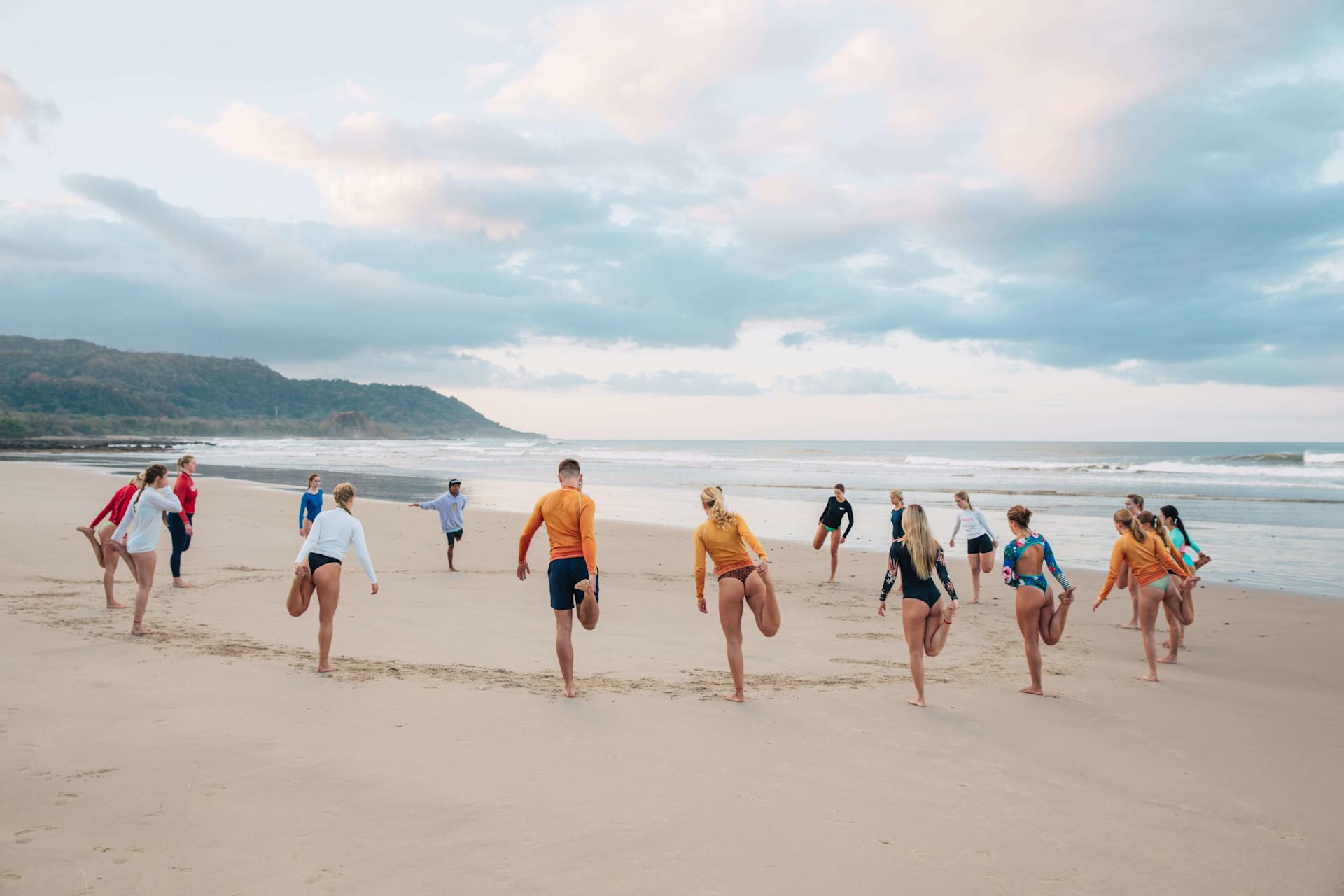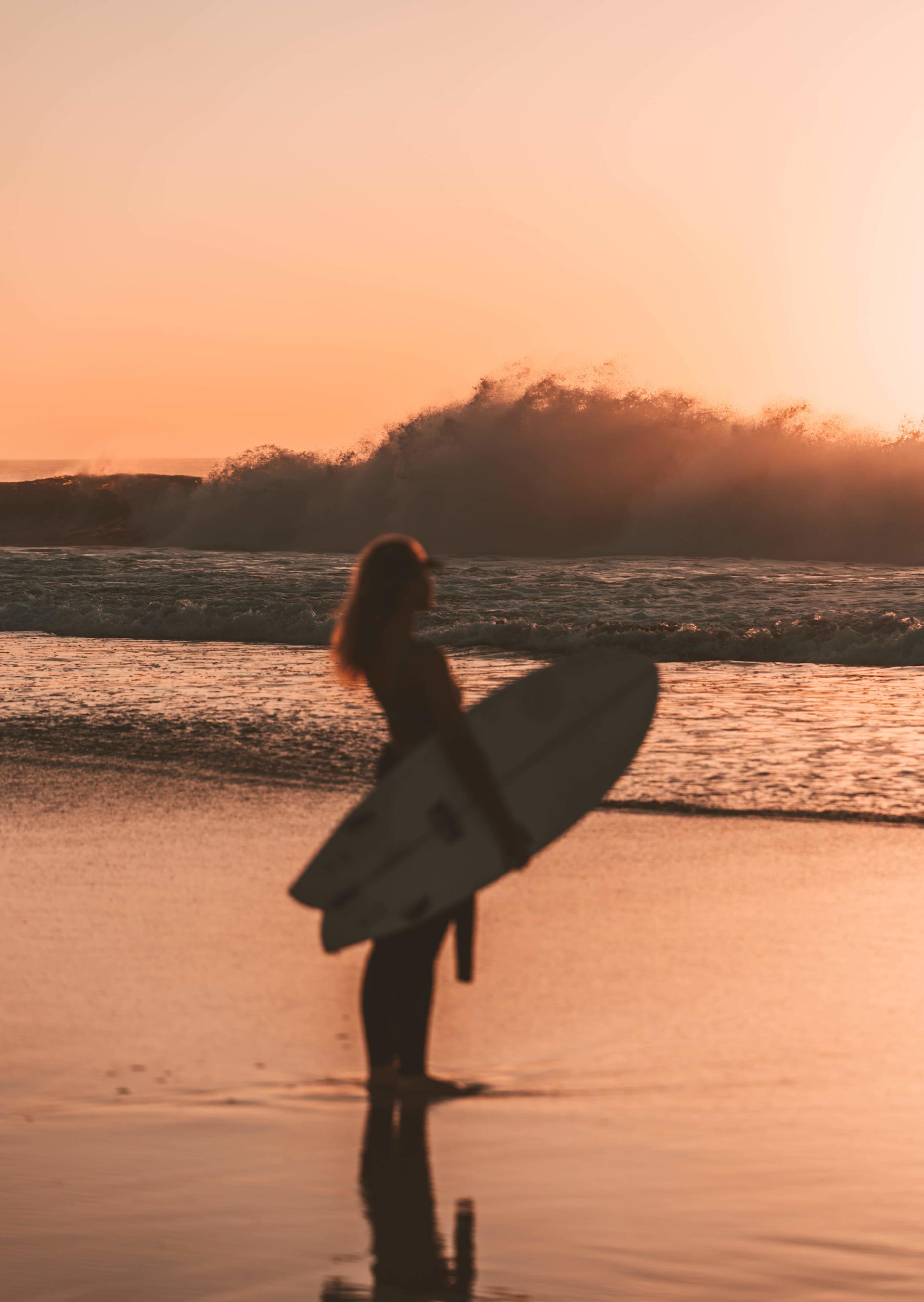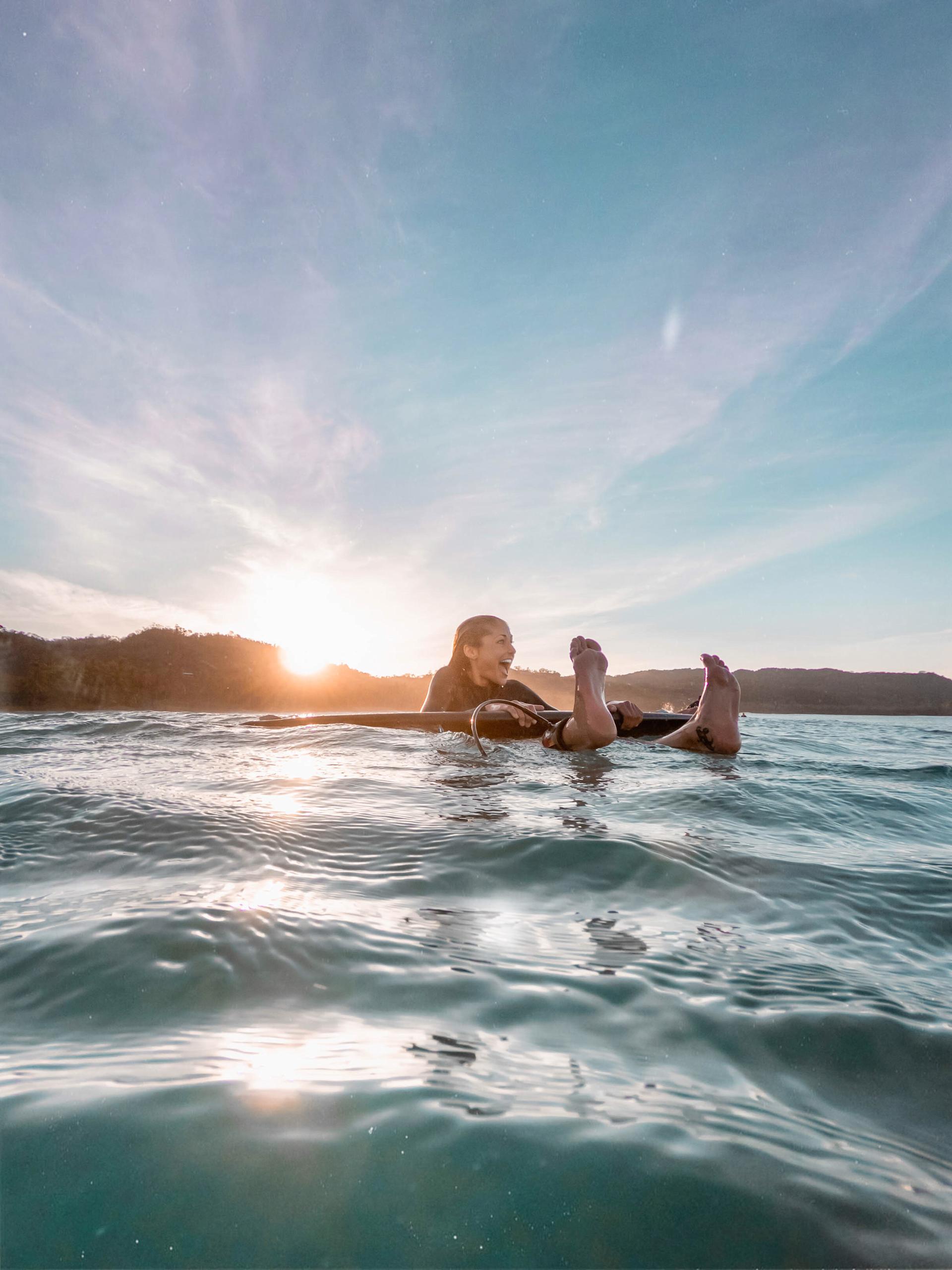
The guide to safe surfing: 13 safety aspects you need to know when you learn to surf
June 30, 2025By knowing some of the basic surf rules and how to read the ocean, many accidents and scary situations could have been prevented before they even had to happen. How do surfers stay safe in the water? And what are the most important surf safety rules? We list 13 tips for beginner surfers to stay safe and minimize the risk of problems while learning how to surf.
Being well-rested, having a good fitness level and surfing on the right board are all important aspects of safe surfing. The more you practice, the more comfortable and safe you’ll feel. While experienced surfers know which risks are associated with surfing and how to keep themselves safe when they face tough conditions, beginner surfers on the other hand often lack this knowledge. So we have put together a list that addresses some of the most common dangers in surfing. Here’s how you protect yourself and others in the water!
Our top 13 tips on how to stay safe while learning to surf
Here’s our list of the most important things that you should know to stay safe while you’re learning how to surf.
Surfing safely tip #1: Surf at an appropriate beginner beach

You want to learn to surf at a beach that is suitable for you. A spot where you can enjoy the learning process, have fun and not put yourself at unnecessary risk. A good beginner spot is preferably a sand-bottomed beach where the rip currents are limited. It might be hard to know where to surf when you’re just starting out, but your fellow surfer friends or surf instructor can help you out with this.
Surfing safely tip #2: Learn to read the ocean – only surf in conditions that suits your level

A very important thing to keep in mind when heading to the beach: if you’re unsure of the conditions, don’t go out! If you go out in conditions that are too hard for your ability you may struggle to get back to the beach if anything happens, like if your leash breaks and you lose your board.
The ocean is way more powerful than you and me, so we need to respect the force that comes with it. Waves can be unpredictable so the more knowledge you have about the ocean, the currents and the waves, the safer you will feel when you go out to surf in it. So take some time to study and observe the conditions. Are there any hazards? Are the waves strong? Are there any rips? A good idea is to ask the local surfers about the conditions of the specific surf spot.
Keep an eye out for which beach flag is currently up and if there are lifeguards around.
Surfing safely tip #3: Don’t drift away with the currents – Use a landmark as a reference point

Before you enter the water, find a landmark that you can use as a reference point when you surf. This will give you control over where you are, without a reference point it's easy for the current to drift you away from where you first entered the water. This can be a tree, a house or any set point at the beach.
Surfing safely tip #4. Identify, avoid and know how to escape a rip current
How to identify and avoid a rip: The current that flows out to the ocean, away from the shore, is called a rip current. Dark spots of water and gaps between waves are usual indicators of a rip, the waves are breaking on the sides of a rip but not in the rip. Experienced surfers use the rip current when they paddle out to the lineup, but for beginner surfers, this current can be quite scary.
If you get stuck in a rip current, it can feel natural to paddle against it to get back to the shore, but the current is strong and will drain your energy and may result in you getting exhausted and drifting even further away out to sea.
How to escape a rip: First thing first: don’t panic if you get caught in a rip! Even though rip currents can be long perpendicular to the shoreline, they are often quite narrow from side to side. Usually around 25 meters. Therefore, the best way to escape a rip current is to paddle parallel to the shore to calmer water. Once you are out of the rip, the breaking waves will escort you back to the beach.
Surfing safely tip #5: Know what’s under your board – What kind of bottom is it?
Knowing what’s under you when you surf is important to stay safe. Is it sand bottom? Rocks? Reef? Knowing this will make it easier for you to be prepared when you go out to the waves (if you would need reef shoes for example) and for the landing, if you fall or jump off your board.
Surfing safely tip #6: Know how to fall correctly – Protect your head first
It is important to know not only what kind of bottom you're surfing over, but also how deep it is. If the water is shallow you need to be more careful regarding how you fall than if the water is deep. When you fall off your board, the most important thing is to protect your head with your arms.
If the water is shallow and the ocean floor is rock or reef it's safest to fall on your stomach, doing a so-called “belly flop”, where your body hits flat against the water surface. This will prevent you from falling with full force to the bottom. If the bottom is sand or if the water is deep then you don’t need to worry as much.
Surfing safely tip #7: Learn how to surf with a surf school or friends – don’t surf alone

It may be obvious, but surfing alone isn’t an excellent idea for a beginner. You should get help from a surf school or surf with more experienced friends. Once you feel like you can take the next step away from going with a school, surf at beaches with lifeguards on duty.
Surfing safely tip #8: Know and follow the surf etiquette and rules
To avoid danger in the water it’s crucial to know the rules and etiquette in the lineup. You don’t want to collide with another surfer, especially when knowing that it could have been avoided if you had just known the rules in advance. Catching up on the basics is the responsible thing to do before you surf, both for yourself and your fellow surfers in the water.
Some of the most important surf rules:
Don’t drop in on the wave that another surfer has priority on
Communicate with the surfers in the lineup when you are going after a wave
Don’t snake on other surfers
Check out this post to find out more on what you need to know about surf etiquette and ethics.
Surfing safely tip #9: Be aware of your surroundings – Keep an eye out for wildlife, boards and other people in the water
Have a check for what kind of wildlife lives in the water you were thinking of surfing in. Are there any jellyfishes around for example? Sharks? The best person to ask about this is the lifeguard, otherwise, the local surfers and the internet are good options. Although, you are more likely to collide with another surfer or your own board than you are to get attacked by a shark or stung by a jellyfish.
Surfing safely tip #10: Use sun protection
Here comes a different kind of safety tip; wear sun protection! Surfers who spend their days in the water are usually exposed to more UV than other people. This can really damage your skin and lead to skin cancer. So make sure that you’re using enough sunscreen with zinc.
Surfing safely tip #11: Check your leash and fins
Make sure that the rope that attaches the board to your feet (the leash) is attached right and that it’s looking okay. It’s neither fun nor safe if your leash breaks or gets detached when you’re in the ocean. It’s also a good habit to check that the fins are properly attached since they can get loose with time.
Surfing safely tip #12: Don’t let go of your board

It may feel like an easy escape to let go of your board when a big wave comes and you want to dive under, but keep holding onto it! Ditching your board can make the lease break. A flying board can inflict quite a bit of injury on the person behind you who gets it in the head. And as for the surfer who got a board in the head, make sure that you don’t paddle close behind another surfer.
Another important safety tip is never to have your board between an incoming wave and yourself since this can lead to your board hitting you when the white water wave strikes. Make sure to keep your board by your side closer to the shore instead.
Surfing safely tip #13: Don’t ever panic

Our last tip, but probably the most important one; is don’t panic! When you’re facing a troubling situation in the water and you feel unsafe, try to stay cool and keep your calm. Don’t push yourself beyond your limits when you’re learning to surf and let your surf instructor know when you’re feeling unsafe and they will help you out.
NEWSLETTER
Stay up to date, sign up for our newsletter

Beatrice Lindfors
About the author: My name is Beatrice, but Bea for short, and I’ve been a writer and content creator for Lapoint since 2022. My life revolves around my laptop and backpack as I travel the world, always with a stop in Ericeira; the camp vibe and the Portuguese sunsets have my heart.
Life goal? Visit every country.
Obsession? The Sri Lanka waves, the Atlantic Ocean and tracking down the best coffee (whichever my current location is).

